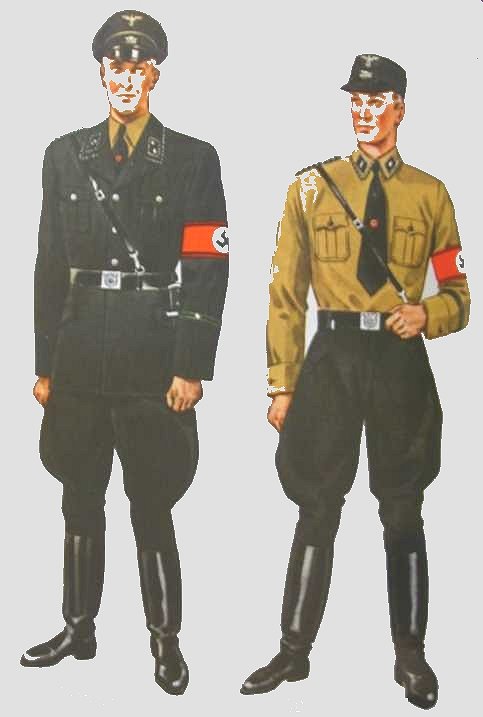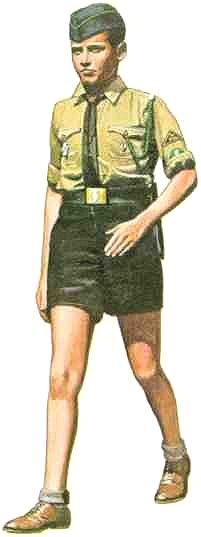
Diary of Carl Kaas:
Beppie van de Beek
8 years old, July 1943
Diary written by Carl Kaas, edited by I Lee
for English structure, grammar or spelling only as needed.
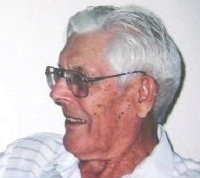
To translate a block of text or web page, click Bing Translate or Google Translate
 Wikipedia Sitemap |
|
|  Useful Links 1 Useful Links 2 |
Diary Entry Date: July 1943
Looking through my treasures and artifacts, I found a letter written by the parents of a little girl in Amsterdam, dated 24 July 1943.
This letter came from people who were no longer able to feed their children. They got my parents' name through an organization which specialized in helping people in the big cities who could not possibly get enough food to keep their little ones from starvation. My Mom was always ready to help as much as she was able to. A lovable little girl named Beppie, about 8 years old, stayed with us until the end of the war.
To William Kaas:
Dear Sir:
This afternoon, we got the message that my daughter Beppie van de Beek can be placed in your care for a few weeks. We are promised that you will take good care of her. We are very thankful and appreciate this very much. About shoes, she has one pair and a pair of sandals. Klompen (wooden shoes) are impossible to get, but if you can buy some for her, we will gladly pay you for them.
Further, Beppie is easy to get along with. She is not spoiled. We are with five. One suggestion . . . when she goes to sleep, we keep the door open. A little note: the ration coupons for food we have we will send, but it is really bad.
We hope you can get along with Beppie, and we thank you from the bottom of our hearts for the trouble we caused you.
Sincerely yours,
L VAN DE BEEK
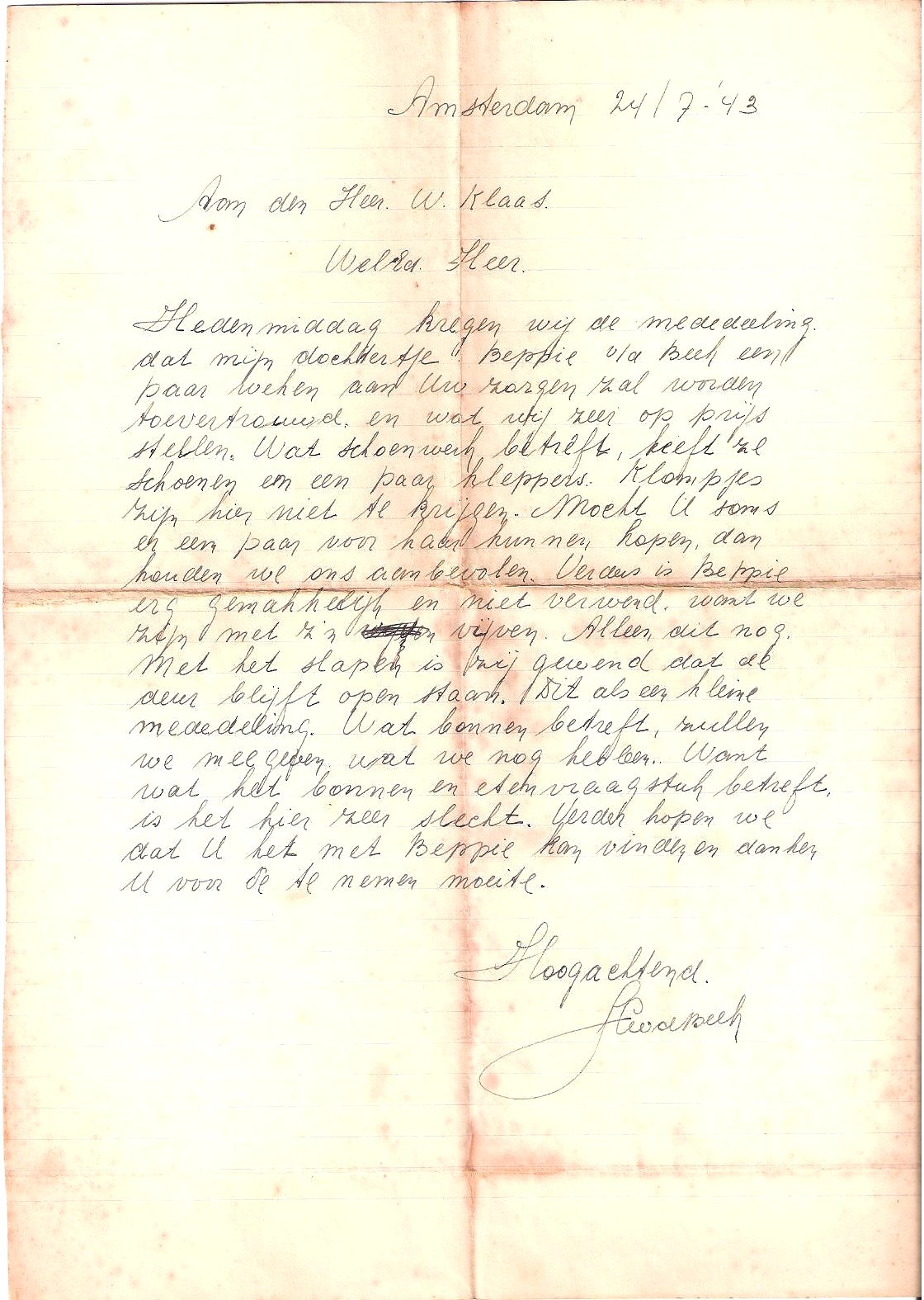
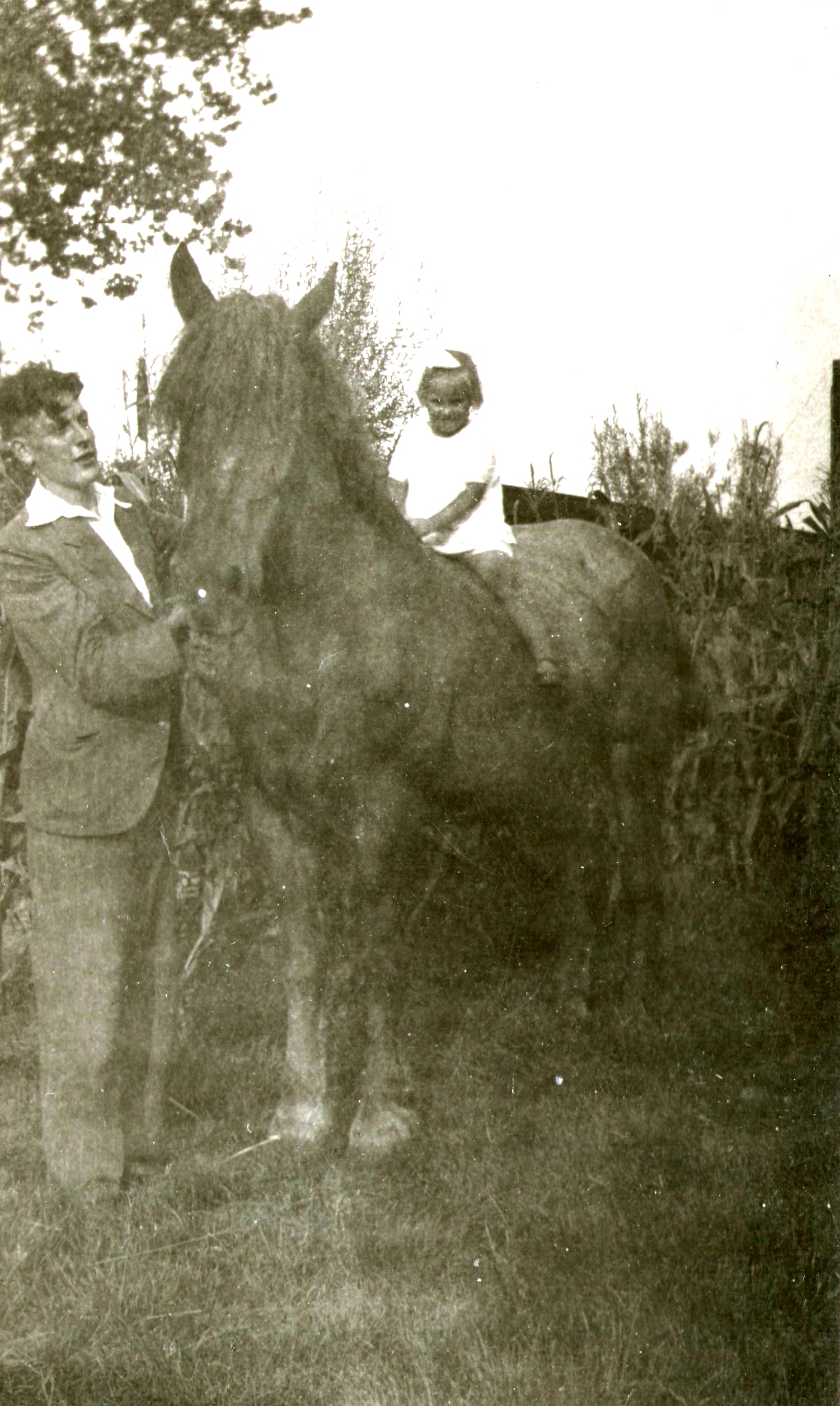
Beppie sitting on Tommy the Horse
with Carl Kaas, age 23, standing by
Cohort Profile: The Dutch Hunger Winter Families Study. "The winter of 1944-45 is known as the 'Hunger Winter' in The Netherlands which was occupied by the Germans in May 1940."
Dutch Famine of 1944. "Over this winter, later infamously known as the Hongerwinter ("Hunger winter"), a number of factors combined to cause starvation of the Dutch people: the winter itself was unusually harsh and the retreating German army destroyed locks and bridges to flood the country and impede the Allied advance . . . In search of food people would walk for tens of kilometers to trade valuables for food at farms. Tulip bulbs and sugarbeets were commonly consumed. Furniture and houses were dismantled to provide fuel for heating. From September 1944 until early 1945 approximately the deaths of 10,000 Dutch people were attributed to malnutrition as the primary cause."
Dutch famine of 1944 from Wikipedia, the free encyclopedia.
Rotterdam 1940-45. Hongerwinter (Hunger Winter).
The Hunger Winter: Occupied Holland 1944-1945 by Henri A. van der Zee. " In the winter of 1944-45, just as other parts of Europe were being liberated, the Dutch seemed forsaken by the Allies, who bypassed Holland on their drive to Berlin. That last winter of the war, with its severe food and fuel shortages, was a terrible one for the Dutch people . . . In some provinces there was nothing to eat but tulip bulbs and sugar beets, and eighteen thousand Dutch civilians actually starved to death.
Porcelain Unicorn or Porcelain Revised Score. Depicts story in Germany, 1943. YouTube video, 3:00 min. In Summer 2010, this film, directed by Keegan Wilcox, was the Grand Prize Winner of the Phillips Tell It Your Way Competition.
Porcelain Unicorn. Summary of story: "A flash back of German boys checking out a house looking for any Jews. One boy finds a Jewish girl hiding with her favorite toys. She gives the German boy a porcelain unicorn but it is soon broken by older Germans (Nazi soldiers). Many years later the man visits the same house to return the unicorn to the little girl he once met."
Philips's "Tell It Your Way" Contest Closes: the Porcelain Unicorn Took it All. "This summer (2010), Philips and the renowned director/producer Ridley Scott launched a global filmmaker competition dubbed "Tell It Your Way" . . . The entrants were given a freedom of expression and could take up any theme they wanted, still there were two strict rules -- there had to be the exact six-line dialogue as it was in the Parallel Lines films, plus the entries could last no longer than three minutes . . .
Only the following six lines of dialogue were used to tell the short story on this film:
Was ist das? ~ What's that?
Ein Einhorn. ~ It's a Unicorn.
Habe noch nie eins so nah gesehn. ~ Never seen one up close before.
Wunderschön. ~ Beautiful.
Schwind ab! Schwind ab! ~ Get away, get away. (Vanish off!)
Es tut mir leid. ~ I'm sorry.
The touching short film 'Porcelain Unicorn' by American director Keegan Wilcox scooped the grand prize . . . entries were selected from six hundred submitted works -- in the first round, they were shortlisted to ten by a panel of judges . . . then the semi-finalists were put to public voting by YouTube visitors . . . and eventually the top five were shown to Sir Ridley Scott to choose the overall winner on September 21, 2010."
